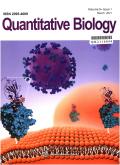多基因风险评分:效果估计与模型优化
IF 1.4
4区 生物学
Q4 MATHEMATICAL & COMPUTATIONAL BIOLOGY
引用次数: 1
摘要
背景:基于全基因组关联研究(GWAS)的多基因风险评分(PRS)是一种推断个体健康结果遗传风险的有用工具,在人类遗传学研究中越来越受欢迎。最简单形式的PRS既具有计算效率又易于获取,但PRS对疾病和性状的预测性能仍然中等。结果:我们概述了统计方法的最新进展,通过结合链接不平衡、功能注释和多效性的信息来提高PRS的性能。我们还介绍了使用GWAS汇总统计来优化PRS的模型验证方法。结论:在这篇综述中,我们展示了PRS方法的进展和目前的局限性,并讨论了风险预测研究中的几个新问题。作者总结:全基因组关联研究(GWASs)的兴起促进了多基因风险评分(PRS)的快速发展。为了直接解决传统的基于GWAS边际估计的PRS预测精度一般的问题,引入了许多后GWAS PRS方法。本文首先综述了受LD、功能注释和多效性等不同生物学概念启发的PRS方法,以更好地量化SNP效应。然后,我们介绍了最近的PRS框架,它可以使用汇总统计来实现模型优化。最后指出了目前风险预测研究存在的缺陷。我们期待在不久的将来出现解决当前挑战的新方法。本文章由计算机程序翻译,如有差异,请以英文原文为准。
Polygenic risk scores: effect estimation and model optimization
Background : Polygenic risk score (PRS) derived from summary statistics of genome-wide association studies (GWAS) is a useful tool to infer an individual ’ s genetic risk for health outcomes and has gained increasing popularity in human genetics research. PRS in its simplest form enjoys both computational ef fi ciency and easy accessibility, yet the predictive performance of PRS remains moderate for diseases and traits. Results : We provide an overview of recent advances in statistical methods to improve PRS ’ s performance by incorporating information from linkage disequilibrium, functional annotation, and pleiotropy. We also introduce model validation methods that fi ne-tune PRS using GWAS summary statistics. Conclusion : In this review, we showcase methodological advances and current limitations of PRS, and discuss several emerging issues in risk prediction research. Author summary: The prosperity of powerful genome-wide association studies (GWASs) has facilitated rapid development of polygenic risk score (PRS). Many post-GWAS PRS methods have been introduced to directly address the mediocre prediction accuracy of traditional PRS built upon marginal estimates from GWAS. This review fi rst summarizes PRS methods inspired by different biological concepts including LD, functional annotation, and pleiotropy to better quantify SNP effects. Then we introduce recent PRS frameworks that enable model optimization using summary statistics. Finally, we point out current pitfalls of risk prediction research. We expect emerging methods that address current challenges in the near future.
求助全文
通过发布文献求助,成功后即可免费获取论文全文。
去求助
来源期刊

Quantitative Biology
MATHEMATICAL & COMPUTATIONAL BIOLOGY-
CiteScore
5.00
自引率
3.20%
发文量
264
期刊介绍:
Quantitative Biology is an interdisciplinary journal that focuses on original research that uses quantitative approaches and technologies to analyze and integrate biological systems, construct and model engineered life systems, and gain a deeper understanding of the life sciences. It aims to provide a platform for not only the analysis but also the integration and construction of biological systems. It is a quarterly journal seeking to provide an inter- and multi-disciplinary forum for a broad blend of peer-reviewed academic papers in order to promote rapid communication and exchange between scientists in the East and the West. The content of Quantitative Biology will mainly focus on the two broad and related areas: ·bioinformatics and computational biology, which focuses on dealing with information technologies and computational methodologies that can efficiently and accurately manipulate –omics data and transform molecular information into biological knowledge. ·systems and synthetic biology, which focuses on complex interactions in biological systems and the emergent functional properties, and on the design and construction of new biological functions and systems. Its goal is to reflect the significant advances made in quantitatively investigating and modeling both natural and engineered life systems at the molecular and higher levels. The journal particularly encourages original papers that link novel theory with cutting-edge experiments, especially in the newly emerging and multi-disciplinary areas of research. The journal also welcomes high-quality reviews and perspective articles.
 求助内容:
求助内容: 应助结果提醒方式:
应助结果提醒方式:


